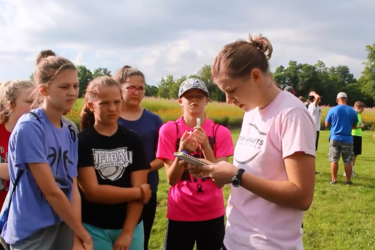Why wetlands?
WSU Earth & Environmental Science teamed with Greenon Local High School to teach the importance of wetlands
November 16, 2018

November 16, 2018
Earth and Environmental Sciences associate professor, Silvia Newell knows very well the role that different wetlands; constructed, natural, and restored, plays in removing the excess nutrients like nitrogen and phosphorus from the ground. These nutrients occur in agricultural areas from the use of fertilizers. Wetlands are buffer zones that help mitigate the effects of the fertilizers. For this reason she wanted to work with a rural school to teach students, who may grow up to become farmers or work on farms, to understand the importance of wetlands as buffer zones between farm fields and
Finding the right college means finding the right fit. See all that the College of Science and Math has to offer by visiting campus.